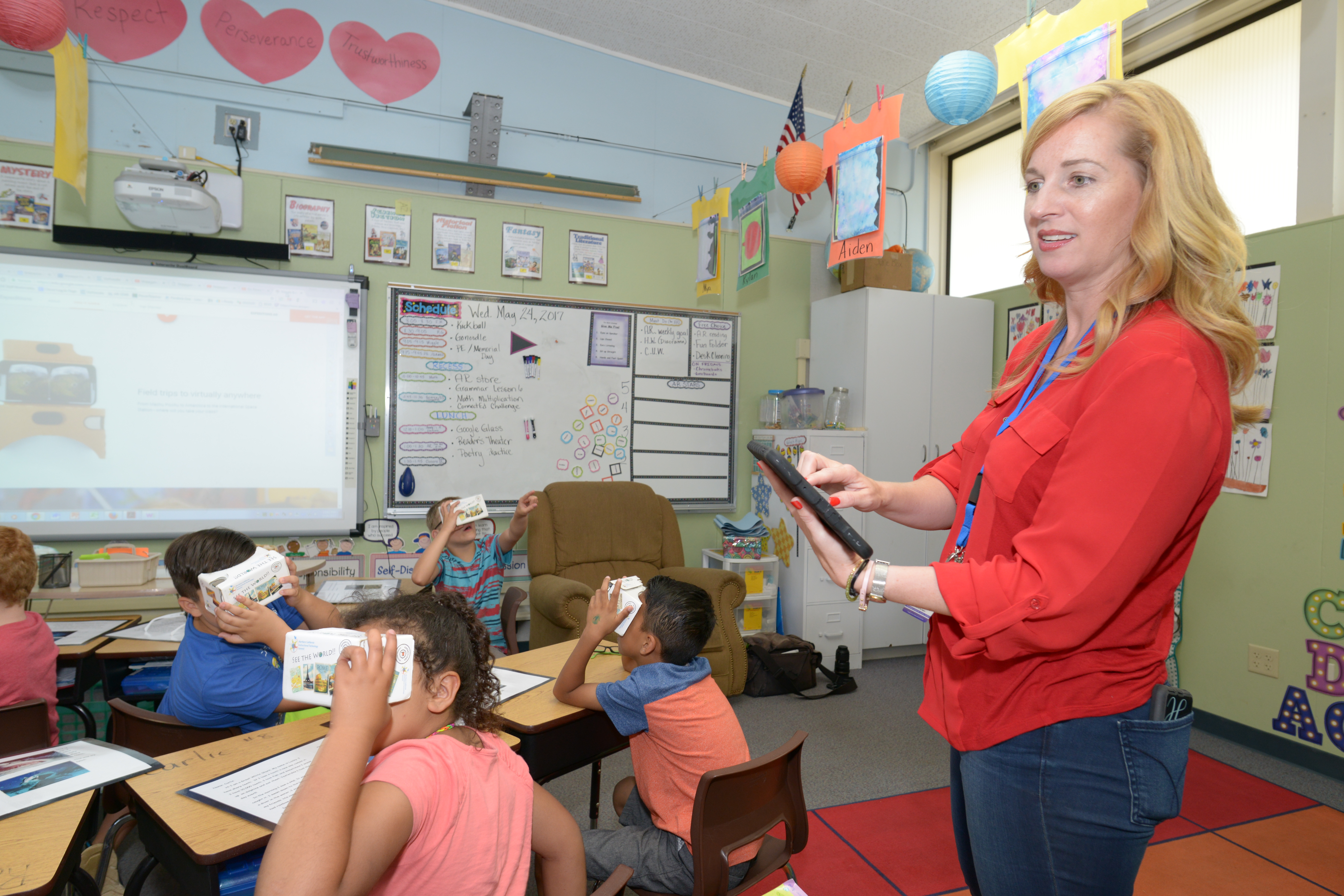
Shasta Meadows Elementary teacher Aimee Howland guides her students as they “swim” with sharks.
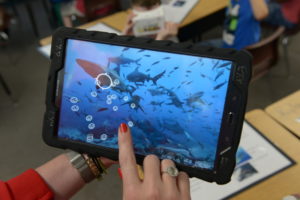
Howland uses a tablet to guide her students through shark-infested waters.
Photos and videos by Scott Buschman
For second-graders at Shasta Meadows Elementary School in Redding, it’s time to swim with the sharks. The youngsters ooh and aah as the megamouth shark glides by, and then scream in excitement when the great white shark makes an appearance.
“Oh no, we are about to get eaten!” a student squeals.
The excitement is genuine, but the danger is not. The students are sitting safely in their seats, wearing “glasses” that look like cardboard boxes, immersed in a virtual reality experience with their teacher and expedition guide Aimee Howland, president of the Enterprise Elementary Teachers Association. Technology coach Mark Lewin, also a member of EETA, assists so things run smoothly.
The Google Cardboard glasses provide students with a 3-D perspective and a 360-degree view of the underwater scene controlled by Howland on her Android tablet. This virtual field trip is fun but also educational, as students learn about the life cycle of various shark species. Afterward, they write essays about the ocean’s most fearsome creatures and use their math skills to calculate the measurements of sharks.
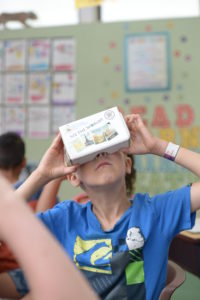
At Shasta Meadows, Aiden Gibson explores the ocean.
“It’s a STEM [science, technology, engineering and math] lesson for them,” says Howland. “The kids are excited. When you can motivate them with engaging technology, it makes teaching really fun.”
“It’s amazing,” says student Nathan Jourdan. “It’s like you are really there.”
“I think it’s awesome,” exclaims classmate Maddie Lacitinola. “It blows my mind.” (To see short videos of their experience, scroll to the end of this story.)
Beyond fun and games
Virtual reality (VR) has long been part of video games, but developers have expanded to educational realms in recent years. According to EdSource, there are more than 400 educational VR expedition or field trip options, including college and career tours.
In VR, participants wear a headset connected to a computer. Three-dimensional images are displayed on a screen inside the headset, and users control movement around the virtual environment with a handheld device — or with head or body movement. In some cases, the user can influence the environment. For example, a door may open if a user waves their hands, and a dinosaur might open its mouth if the user moves toward it.
The technology allows students to travel the world, visit distant planets, and draw shapes and structures in 3-D to help them better understand math. Some biology teachers are opting to replace animal dissection with VR because it isn’t messy and doesn’t traumatize students, allowing them to see a beating heart and blood flowing through arteries that can’t be viewed in dissected subjects.
“When you can motivate them with engaging technology, it makes teaching really fun.” – Aimee Howland, Enterprise Elementary Teachers Association
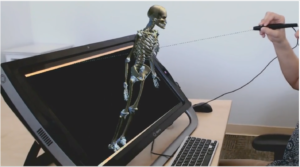
Technology from zSpace combines VR and AR to let students see and manipulate 3-D objects.
Another technology, augmented reality (AR), brings virtual objects into the real world. AR lets students get up close to view a meteorite or a strand of DNA, for instance, which appears amid the real desks and students in the classroom.
These technologies increase comprehension of things that may be difficult to explain. For example, they can help students grasp how electrical current flows when they switch on a light. For students with special needs, VR and AR can provide opportunities they may otherwise not experience, such as diving into the ocean or climbing a mountain.
While they won’t replace field trips or lab experiments, VR and AR can be a great supplement for educators and have limitless potential.
A 2016 study released by Samsung Electronics America finds that only 2 percent of teachers have used VR. But that may change as it becomes more accessible through Google and other companies. Howland believes that as the Next Generation Science Standards are fully implemented — and software companies align their products to match the new standards — VR may become commonplace.
“The future is here,” she smiles.
Companies offer educational VR
Google’s VR system, dubbed “Cardboard,” is easy for teachers to utilize. It’s part of Google’s Expeditions Pioneer Program, which offers virtual journeys to more than 100 destinations, accompanied by educational content developed in partnership with organizations like PBS, the American Museum of Natural History, the Planetary Society, and the Wildlife Conservation Society. Expeditions kits (for 10, 20 or 30 students) include Cardboard viewers and Android phones for students and teacher, a teacher-operated tablet, and preinstalled software that keeps viewers synced together. You can buy a kit or build your own, to use along with an app from the App Store or Google Play.
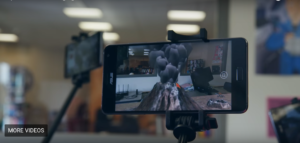
A volcano “explodes” in Google’s augmented reality video.
This fall, as part of the program, Google is introducing its AR component to classrooms, and is asking interested teachers and schools to sign up.
Other companies offering VR, AR and 3-D systems for schools are Sony, Samsung, Oculus (owned by Facebook) and Amazon. Lifeliqe (pronounced “lifelike”) offers more than 1,000 3-D images of plants, animals, and natural features like volcanos and rivers. Students can click on a subject, zoom in, turn it around and examine it closely layer by layer.
Costs vary. Some apps are low-cost or free, but the equipment — headsets, earphones, etc. — can run anywhere from a few hundred dollars to $1,000 per set. Some schools use funds from their Local Control Funding Formula to update technology programs, or grant money to purchase equipment. In Los Angeles, for example, a teacher received a grant to purchase two Oculus VR sets costing approximately $600 each on Amazon, which allow students to walk through buildings they’ve designed and view their work in immersive 3-D.
3-D pilot program
Inside a Los Altos classroom, students put on a pair of 3-D glasses to look at a computer monitor, and with a stylus pen in hand “pick up” the Earth from the screen, spin it around and examine the water cycle in 3-D. They watch in amazement as water evaporates from the surface of the earth, rises into the atmosphere, cools and condenses into rain or snow in clouds, and falls again as precipitation, refilling rivers, lakes and the ocean. Students zoom in and out to see phenomena such as snow melt and even tiny beads of water condensation.
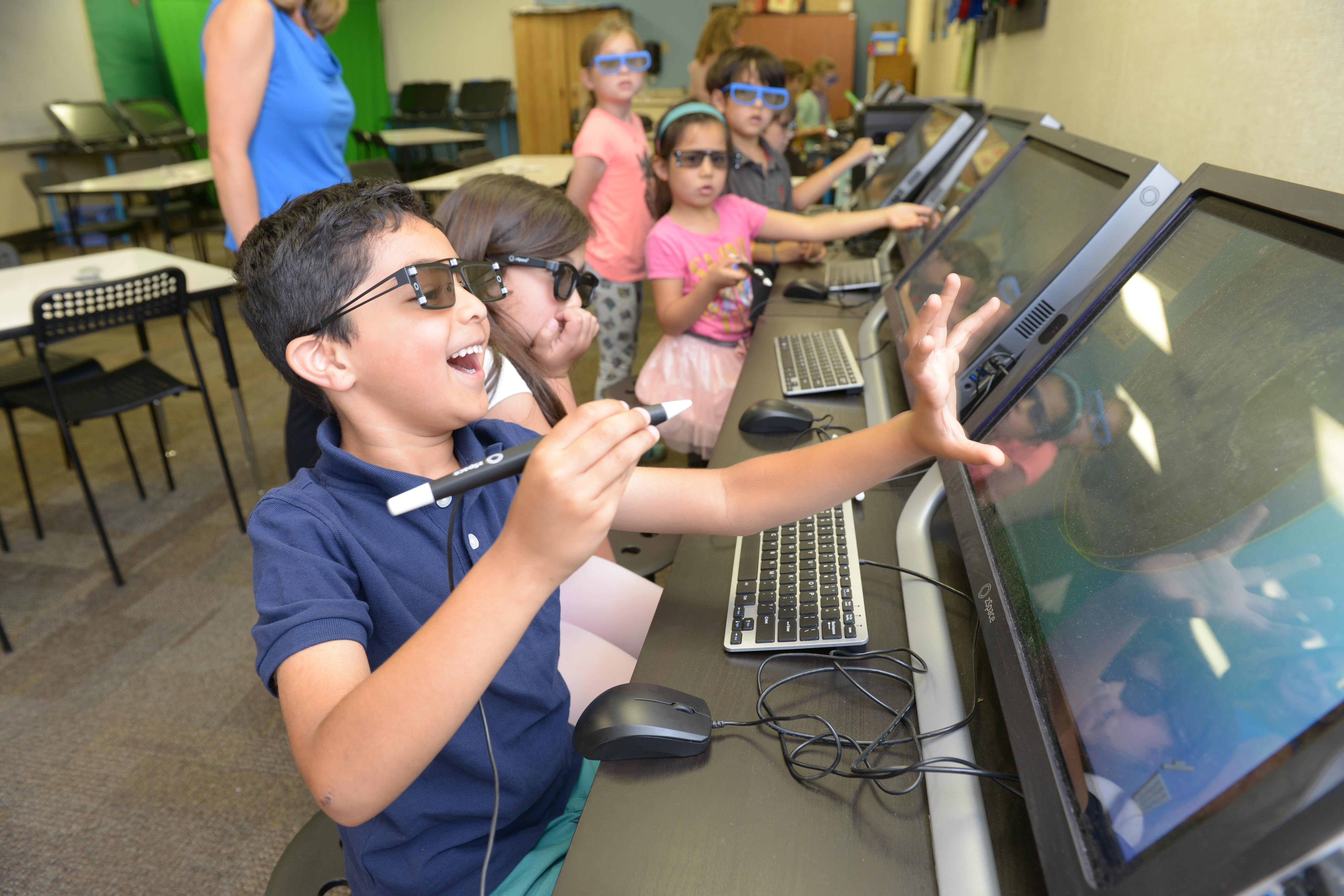
At Santa Rita Elementary, Avneesh Lande tries to grab “earth” using mixed realities technology from zSpace.
The students at Santa Rita Elementary School are using zSpace, an interactive and immersive 3-D platform. The Silicon Valley company, whose hardware, software and educational content combine virtual and augmented reality (see sidebar), has a partnership with Los Altos School District and is piloting this technology at Santa Rita.
“There are many activities in zSpace that give students a chance to manipulate scientific experiences that cannot be replicated in the classroom,” says STEM teacher Kelly Rafferty, a member of the Los Altos Teachers Association.
“[This] technology makes science come to life in the classroom. It helps students stay focused and gives a sense of play — and purpose — to what they are doing.” — Kelly Rafferty, Los Altos Teachers Association
Students have been using zSpace to learn about the circulatory and respiratory systems over the last couple of years. It allows them to see inside a 3-D heart to learn how the valves work, and see the size and location of veins and arteries. They are able to feel the heart pumping through the stylus in their hand. The program is so advanced that doctors and even heart surgeons at nearby Stanford University are using it for training purposes.
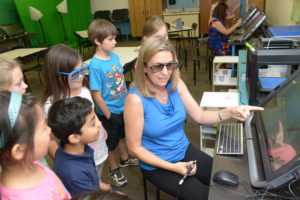
Santa Rita Elementary STEM teacher Kelly Rafferty shows students how to work the special glasses and stylus.
“ZSpace is technology that makes science come to life in the classroom,” says Rafferty. “It helps students stay focused and gives a sense of play — but also purpose — to what they are doing.”
VR helps students stay fit, too
While most assume youth immersed in virtual worlds are couch potatoes, a San Francisco State University professor believes that VR is a tool that can promote physical fitness in students.
In the first study of its kind in the U.S., the university’s Department of Kinesiology has researched the metabolic energy expended by students playing VR games and found they indeed offer exercise benefits and may be the wave of the future. While games on devices such as Wii promote physical fitness, they are viewed on a screen and do not immerse players in virtual worlds.
“We absolutely see VR exercise as something for PE classes,” says Marialice Kern, department chair and California Faculty Association member, who is leading the study.
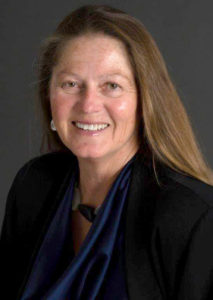
Maralice Kern, SFSU Dept. of Kinesiology chair and CFA member
“The work we’ve been doing for the last eight months shows you can get great exercise with VR and get as much of a workout as any conventional exercise if you choose the right games and play with interest and vigor.”
Kern and fellow researchers studied heart rate and oxygen consumption to determine how many calories were burned in subjects performing such activities as boxing in a virtual ring, dodging colorful orbs to a musical beat, and playing other games that immerse students in a 3-D world. The university collaborated with the newly established VR Institute of Health and Exercise, founded by a Silicon Valley entrepreneur to create VR exercise ratings that will eventually be published online.
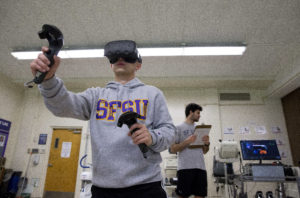
San Francisco State University research shows that playing VR games offers exercise benefits.
When asked if immersing students in individual virtual worlds could be isolating — or dangerous if they bump into one another — Kern replies that eventually students will be able to play “virtual team sports” in school such as capture the flag or flag football.
“All it takes is that everybody on one team has their headset plugged into one computer,” she says. “The technology and the games are already here.”
What’s Your Reality?
Virtual reality: An umbrella term for all immersive experiences, which can be created using real-world content, computer-generated content, or a hybrid of both.
Augmented reality: An overlay of virtual content on the real world. A virtual dinosaur may appear to be in the classroom — but it can’t eat a real student or physically interact with real objects. Think Pokémon GO or Google Glass.
Mixed reality: A merging of real and virtual worlds to produce new environments and visualizations where physical and digital objects coexist and interact in real time. Microsoft’s Hololens, which allows you to engage with holograms while anchored in your reality, is an example.
Google Expeditions
VR: Google Expeditions VR kits (for 10, 20 or 30 students) include Cardboard viewers and Android phones for students and teacher, a teacher-operated tablet, and preinstalled software that keeps viewers synced together. You can buy a kit or build your own, to use along with an app from the App Store or Google Play. A kit for 10 students and the teacher is $4,000 at Best Buy and other outlets. See edu.google.com/expeditions for more information.
AR: Google is introducing its Expeditions Pioneer Program for AR in schools now. The technology maps the physical classroom and places 3-D objects such as tornadoes and skeletal systems within that location. Students can walk around the objects, get in close to spot details, and step back to see the full picture. To sign up, go to edu.google.com/expeditions/ar.
Video Clips
Short videos of Aimee Howland’s students experiencing virtual reality:
[wpvideo IWigwdNV]
[wpvideo uDoG6Pkz]
[wpvideo Vxy6nfyk]
The Discussion 0 comments Post a Comment